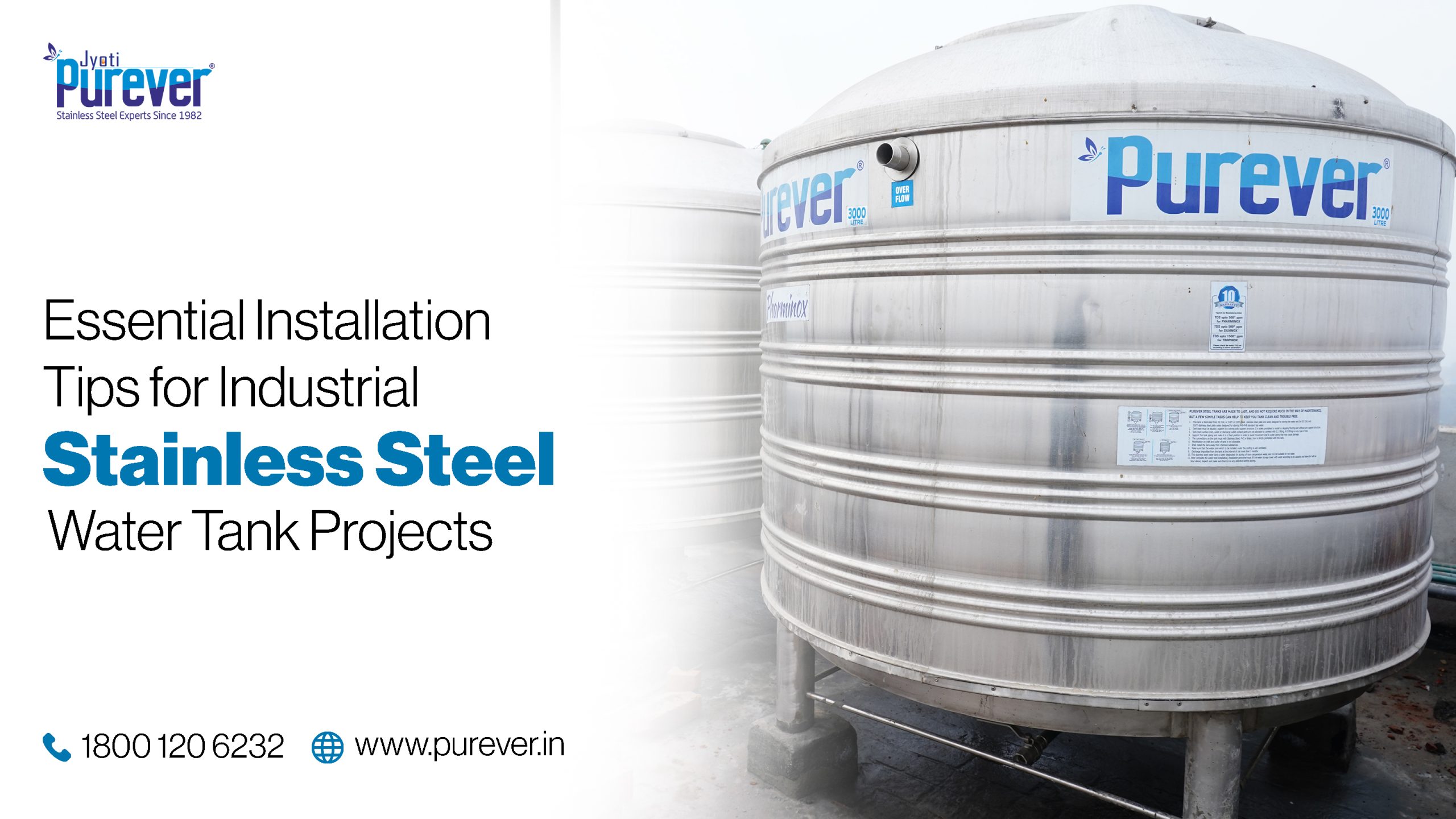Installing stainless steel water tanks isn’t just about setting a container in place and connecting a few pipes. It’s a process that can directly impact performance, hygiene, and lifespan. Whether it’s for a factory, a food processing unit, or a commercial complex, the way you install the tank determines how well it will serve you over the years.
I’ve seen projects where businesses spent on top-grade tanks but skipped on proper installation planning, and within a year, they were dealing with leaks, water stagnation, or pressure issues. So, if you’re investing in commercial stainless steel water tanks, it’s worth doing it right the first time.
Here’s what really matters.
- Choose the Right Location First
Before you even order your tank, take a good look at where it’s going to sit. The base should be level, sturdy, and capable of supporting the tank’s weight when full. Remember, a single litre of water weighs one kilogram, that adds up quickly when you’re dealing with industrial capacities.
Stainless steel water tanks perform best when installed on smooth, well-prepared foundations. If the base is uneven, pressure builds unevenly too, and over time, that can stress the structure. I’ve come across cases where even a small tilt caused water to collect at one end, affecting both flow and hygiene.
So – flat, reinforced, and stable. That’s your checklist.
- Mind the Sun and Space
For outdoor installations, placement matters. Commercial stainless steel water tanks are resistant to heat, but positioning them under direct sunlight all day can still warm the water, especially in peak summer. If possible, install them where they get partial shade or use an overhead canopy.
Also, leave space around the tank for maintenance. It sounds obvious, but many installers squeeze tanks into corners, making future inspections or cleaning difficult. For custom stainless steel tanks, factor this into your design discussions so you don’t end up with an inaccessible setup.
- Proper Inlet and Outlet Design
In industrial installations, the inlet and outlet placement isn’t just about convenience, it affects water pressure, flow, and cleanliness. Ensure that the inlet pipe doesn’t splash directly on the tank floor; use a diffuser if needed. It helps prevent erosion at the base and reduces the chance of sediment collection.
For the outlet, slightly raise it from the bottom so that dirt or debris doesn’t get pulled into the main supply. A drain point at the very base, however, is essential for periodic cleaning. Many installers skip this, but trust me – it makes maintenance so much easier later.
- Ventilation and Overflow Systems
Every stainless steel water tank needs a good ventilation setup. Without one, pressure can build up inside the tank when it’s filling or draining, putting unnecessary stress on joints and welds. A properly designed vent keeps air circulation balanced.
Equally important is the overflow outlet. It should be directed away from the tank foundation to prevent water pooling, especially for larger commercial stainless steel water tanks, where overflow volumes can be significant. A few extra minutes spent designing drainage can save you structural trouble later.
- Go for Professional Installation (Seriously)
I know it’s tempting to let local plumbers handle it because they’re cheaper, but industrial and custom stainless steel tanks deserve professional hands. Precision welding, pressure testing, and hygienic pipeline connections are critical, and they’re not things you want to leave to trial and error.
Certified installers understand the unique requirements of commercial stainless steel water tanks, especially when it comes to maintaining hygiene standards for food or pharma-grade water. They’ll ensure every seal, valve, and fitting is done with long-term durability in mind.
- Don’t Forget Regular Inspection After Installation
Once your stainless steel water tank is up and running, schedule periodic inspections, at least once a year. Check the fittings, look for leaks, clean the inside surface, and ensure there’s no stagnant water. The best tanks, even those built with the highest-grade steel, still benefit from a little attention.
If you’re using custom stainless steel tanks, ask the manufacturer (Purever, for example) for a recommended maintenance routine. These are usually tailored to the tank’s size, design, and usage pattern, and following them can easily add 5–10 years to its life.
Purever’s Perspective
At Purever, we’ve seen how the right installation can make the difference between a tank that lasts decades and one that struggles within a few years. Our stainless steel water tanks and commercial stainless steel water tanks are designed to perform under tough industrial conditions, but proper site prep and installation make that performance truly shine.
From designing custom stainless steel tanks to guiding clients through the installation process, our approach is simple, don’t just install a tank; build a system that works seamlessly for years.
Because when water is the backbone of your business, the tank holding it deserves more than a quick setup, it deserves attention to detail.

